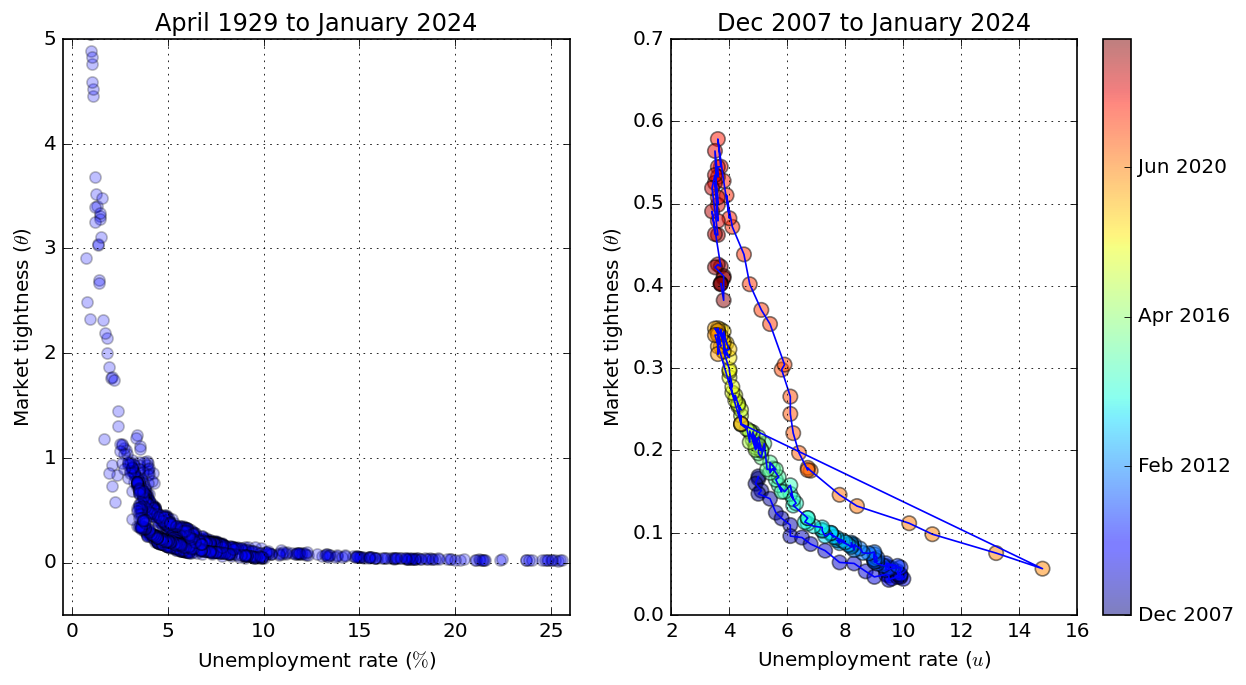Beveridge Curve Data
In Figure 3 of our article, we present the following plot of Beveridge curve data for the US replicated from Petrosky-Nadeau and Zhang's (2014) article:
The figure is a plot of labor market tightness against the unemployment rate for the US for each month from April 1929 through September 2018. Market tightness is the ratio of job vacancies to unemployed persons. The downward-sloping relationship between market tightness and the unemployment rate is a key prediction of the DMP model and this figure provides important empirical justification for the model.
- Data: csv formatted.
- Data sources and construction: See Appendix A of Petrosky-Nadeau and Zhang's (2014) article
- Program: Jupyter notebook or Python script. X-13ARIMA-SEATS Seasonal Adjustment Program is required. X-13 binaries are available here. See this page for instructions on compiling X-13 for Mac OS X.

